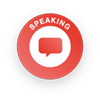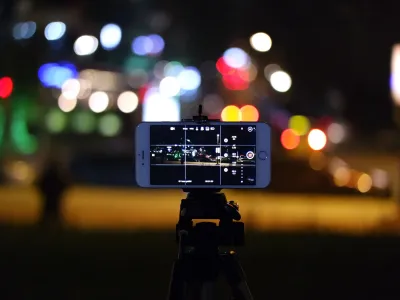
A Guide To Presentation Perfection
Include this article in your Skills Builder Journal. It could help you develop...
Being able to present ideas is important. In life, in school, and in future careers. But how do you make sure you’ve got what it takes? We’ve put together everything you need to make your presentations perfect. All you need to do next is practice! Why not create a presentation on something you love, set up a Zoom and give it a whirl on your pals.
Confidence is key
The first thing to know about presenting something is to know what you’re presenting! Talking in front of an audience, no matter the size, can feel quite intimidating, however, if you have a firm grasp of your subject, it makes it easier.
Make sure that you feel informed enough to be able to explain it thoroughly to someone else. Do your research, find the facts, and be prepared. And this doesn’t mean you have to learn what you’re saying word-for-word like a script. Try jotting down bullet points on some cue cards to help you get from one point to the next.
And most importantly, practice, practice, practice. Practice in front of a mirror, to a family member, or even to your cat. Then, when the time actually comes, you’ll be confident in yourself and in your given subject!

Keep it simple
You want your main focus of your audience to be on you. Your slides are really just an accompanying piece to what you’re talking about! So, keep them clear and concise, and not too text heavy - you don’t want your audience to be reading lots of words instead of listening to you.
And as fun as they may seem, avoid the temptation to dress up your page with loads of effects. A couple here and there might bring in some excitement, but make sure they work with what you’re saying, and aren’t a distraction.
The 10-20-30 ‘rule’ is also quite helpful when it comes to constructing your presentation; it contains no more than 10 slides, lasts no more than 20 minutes (people’s attention usually starts to wane after about ten minutes, so the shorter the better in this case), and uses a font size of no less than 30pt. This will help keep everything succinct, consistent and will keep your audience engaged.

Put on a show
So you’ve got your topic, and your actual presentation done. Now you’ve got to start thinking about the way in which you’re going to present. It might appear quite easy to stand up and talk, but you don’t want to sound monotonous or robotic...and similarly, you don’t want to be firing from all cylinders and too energetic to follow! A good presentation is about entertaining as well as getting your points across.
Audiences retain more information if they’re enjoying themselves and feeling relaxed. So try to find ways to make your content and delivery enjoyable. This could be through humour, through questions or through your body language. So, relax a little! Let yourself laugh, connect with your audience through eye contact and don’t forget to smile.

Take the audience on a journey
Get them hooked from the start! You can do this by using simple storytelling techniques. Think of your presentation as a story you’d want to tell your best mate. How would you make it interesting?
You’d probably start with something intriguing, surprising or exciting, right? Something that grips emotions, hooks them in and makes them want to hear more? Well, you can do the same with your presentation! Make your audience sit up and take notice. Think about what they might already know about your subject, and how much they care about it and then use that to craft an opening that will pull them in.
And then, it’s about explaining why you love your topic. Try not to use too much jargon or technical language linked to your topic - it might put your audience off. Use relatable language that will connect with them on a more human level. The most engaging speakers quickly introduce the topic, explain why they care so deeply about it, and convince their audience that they should, too.

Ask questions
Question yourself, your topic...and your audience! When you’re compiling your presentation, ask yourself things like: What is the most important piece of information? What do I want my audience to gain from this?
Then, during your presentation, don’t be afraid to use questions as a talking point. They might be rhetorical at the time, but it will keep your audience engaged and will pique their interest. Build tension by posing a question and letting your audience sit with it for a moment before moving to the next slide with the answer.
Then, once your presentation is over, open yourself up to questioning! Ask your audience if they have any further questions from you, about your topic. This is a great chance to see what they learnt from the presentation, and allows you to have a more open discussion about your subject.
So, do you feel ready to present? Why not set up a presentation evening with some pals. Everyone picks a subject to talk about, set a time limit, and take it in turns to present over video chat. Maybe you’ll learn something new!





